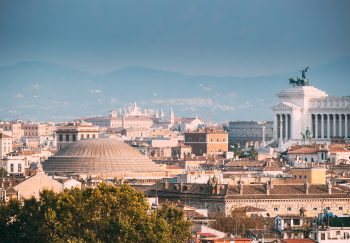It doesn’t matter if you are a historian, amateur or professional, it is impossible to not be fascinated by history while you’re in Italy. Many of the most famous attractions in the country date back to the Roman period, while others are more recent. It is quite amazing to think of someone like Leonardo da Vinci, Michelangelo, or Julius Caesar walking through your city.
(Sidebar? (Sidebar?
There is a history to Italy that is even older than Rome’s. And I don’t mean dinosaurs. These three ancient civilizations are available to learn more about in Italy. Each of them predates the Roman Empire.
Nuragic Civilization
c. 1700 BCE – c. 238 BCE
Although the island of Sardinia belonged to the Nuragic people for many centuries, very little information is available about them today. The Nuragic structures that are still standing are called “nuraghi” (almost-cylindrical towers). Parts of approximately 7,000 structures are still left in Sardinia. The nuraghi around Barumini have enough historical significance to be the island’s sole UNESCO World Heritage Site.
The Nuragic civilization is not documented in writing. Therefore historians rely on the ancient Greek and Roman accounts. All of this must be taken with a grain of salt. Although it is not known what the purpose of the Nuraghe towers was, the most common theory is that they were constructed as fortified homes.
Santu Antine, located in northern Sardinia’s Torralba is the largest nuraghi. The UNESCO-listed Su Nuraxi, which is located in the southern part of the island, is found in the central part of the island. There are traces of villages around and near the nuraghe.
Santu Anntine is open all year from 9:00am to 8:00pm. Guided tours run almost every hour of the day, starting at 9:30am. From October to March, there are fewer tours. Tickets cost EUR6 per person. Su Nuraxi opens year round at 9:00am and closes (depending on which month) between 4:00pm – 7:30pm. Guided tours can be arranged and depart at the end of each hour. The cost of tickets is EUR10 per person (EUR8 if you are between 13-17 and EUR6 if you are between 7-12 and 12), and includes the museum and archaeological site. Please dress appropriately for the weather as the archaeological sites are outside.
Etruscans
c. 750 BCE – c. 100 BCE
The name “Etruscans”, which sounds familiar to you, is the name of the people who lived in the present-day Tuscany. Later, the name Etrusci (or Tusci) that the Romans gave the people was used to name Tuscany. The Etruscan territories extended beyond what is now Tuscany and into areas of Lazio and Umbria. This was what was called Etruria.
Much less is known about the Etruscans than we do about the Sardinia builders of the Nuraghi. Although they had their own language, it was not fully deciphered. Modern scholars also rely heavily upon accounts written by ancient Romans (and they often don’t agree), and artifacts, frescos, and tombs of Etruscans.
Many modern Italian cities were founded as Etruscan cities long before the Roman Empire took over. Tourists can also see evidence of Etruscans in museums and in situ.
The walls surrounding Volterra are from the Etruscan era. On display at the Museo Etrusco Guaranacci, you will find Etruscan artifacts. You can find some Etruscan tombs in Populonia and Vetulonia as well as Chiusi. Orvieto is home to three museums that house artifacts and tombs from the Etruscan period.
For anyone who is interested in the Etruscans, the museums and the necropolises at Tarquinia and Cerveteri (both operated by the same organization), are a must-see. Tickets for both necropolises cost EUR6 per person and are open daily from 8:30am to dusk all year. Cerveteri requires reservations and a EUR2 reservation fee per individual. Tickets are EUR6 per person and each museum is open daily from 8:30am to 7:30pm throughout the year. You can purchase combined tickets to both the necropolis or museum in each town for EUR8 per person.
Magna Graecia
c 740 BCE-c 89 CE
Latin for Magna Graecia, the name refers to Greek settlements along the coast of Puglia and Calabria. It was a mixture of native and Greek cultures that eventually made the culture unique. Magna Graecia was eventually absorbed by the Roman Empire. However, there are still plenty of evidence that the Romans did not conquer those areas.
is a modern city that has its roots back in Magna Graecia. Neapolis is the original Greek name for “New City” and there are still some Greek ruins beneath the modern city streets. Three beautifully preserved ancient Greek temples are located near Paestum. The best place to see Magna Graecia’s remains is outside Agrigento, Sicily. It’s located in the UNESCO-listed Valley of the Temples. You’ll find the most well-preserved, ancient Greek temples anywhere on the planet, including Greece.
The archaeological area at Paestum, which includes the temples, is open daily at 8:30am (the closing times vary depending on the season). The Paestum museum’s hours of operation are 8:30am to 7:30pm (May 7 through October 1, and 10:30 on Saturdays). The museum and archaeological site tickets cost EUR9 each.
The Valley of the Temples archaeological park is open daily from 8:30am to 7:00pm. Tickets cost EUR13.50 per person for the museum and the temples, or EUR10 for the temples. Evening tours are available in the summer.











